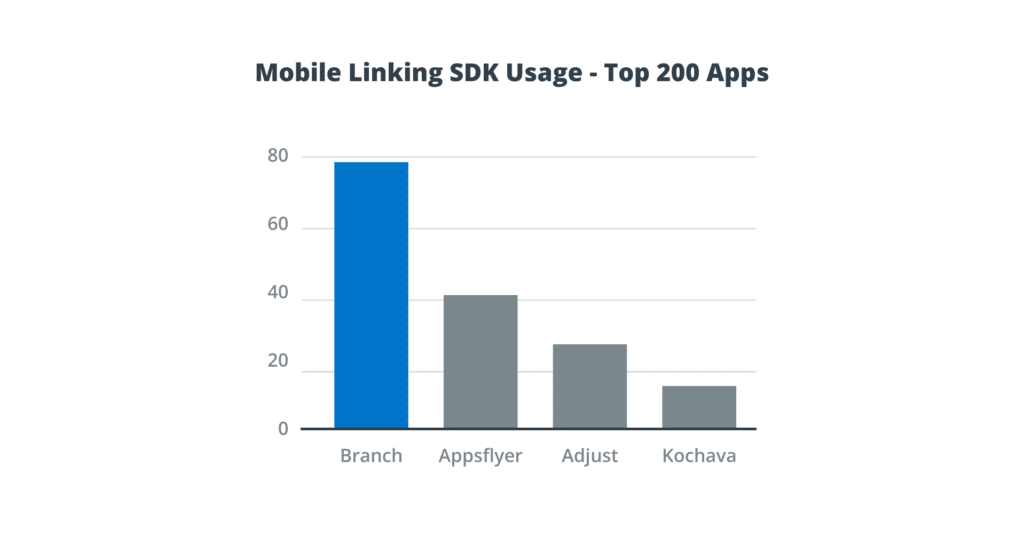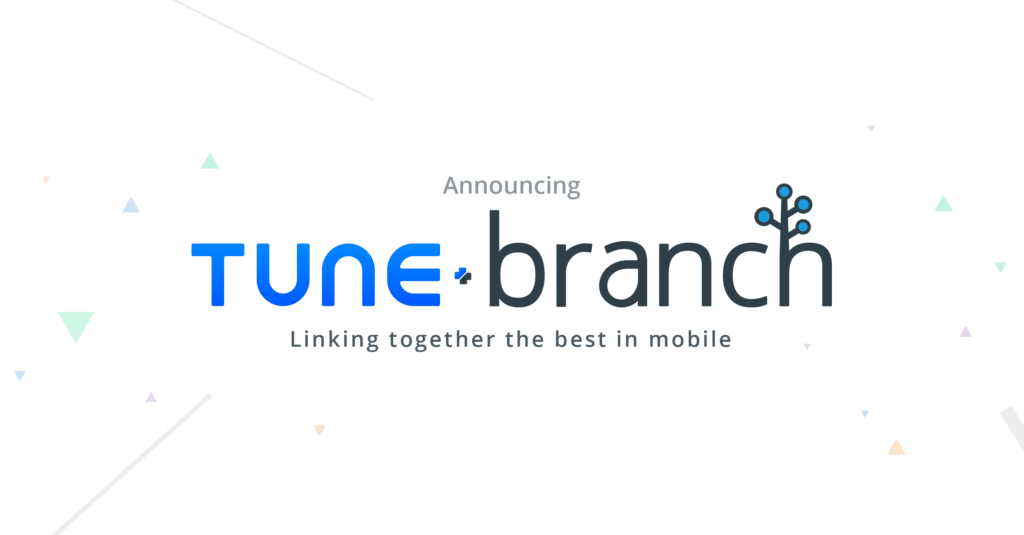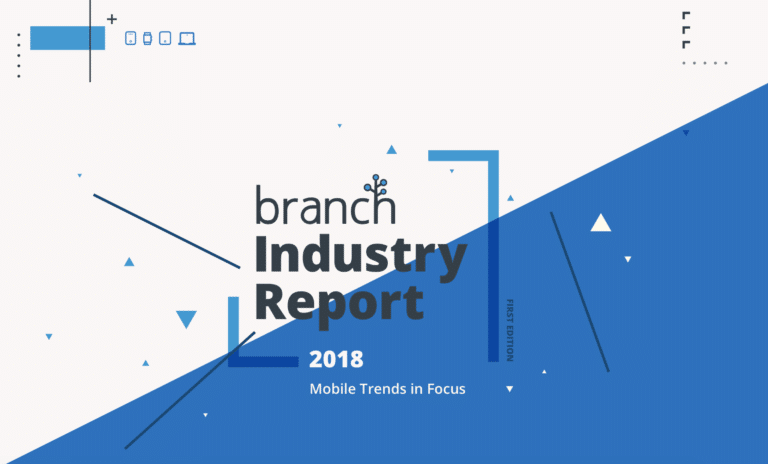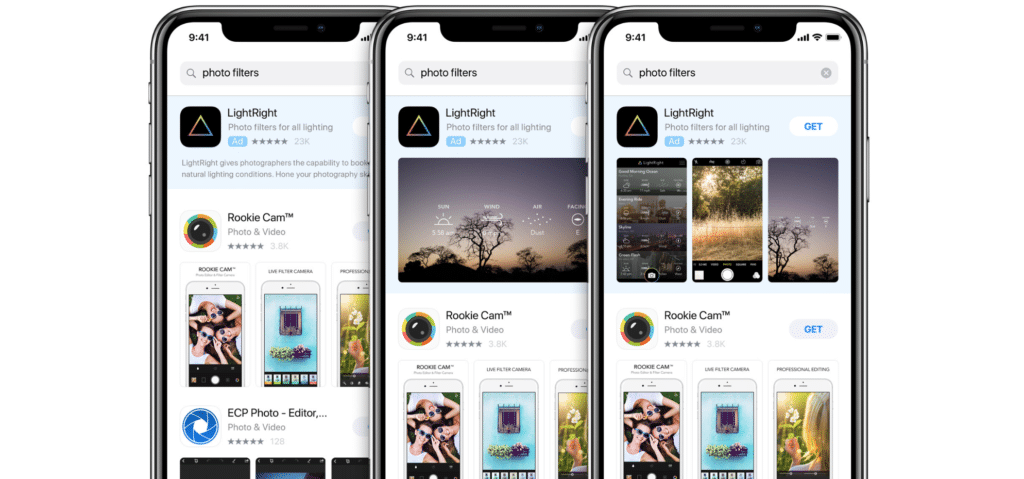As 2018 draws to a close, we thought we’d take a minute to look back at the most popular posts of the past twelve months. From a major acquisition to fresh insights on app installs and adoption, we learned a lot this year and hope you have, too.
1. How to Track Facebook Mobile App Installs

In Branch’s study of mobile user acquisition performance by marketing channel, we found that Facebook and Instagram drive the highest click-through rates for mobile app install campaigns, with both channels driving more than double the click-through rates than email marketing. Facebook’s ad campaigns stood out at helping brands accelerate cross-platform growth in the form of conversions, activations, and mobile app installs. Additionally, the valuable data-driven insights provided by optimized Facebook App Installs can prove critical in informing marketing priorities, budget allocation, and channel and platform strength. In this post, we shared innovative solutions to today’s most pressing mobile (and cross-platform) attribution challenges:
- Understanding the journey beyond the app install event: Mobile marketing KPIs have grown increasingly sophisticated. Rather than looking only at install data, marketers must also focus on end-of-funnel goals, such as engagement, signups, subscriptions, and purchases.
- Recognizing that an attribution provider isn’t optional: Many publishers, ad networks, and mature platforms like Google and Facebook keep their analytics in-house, making it challenging to achieve an accurate view of attribution. An example: If a user sees your ad on multiple ad networks before installing, multiple networks might attempt to claim credit for that install. Only an attribution provider acting as a neutral third party can pull data from multiple ad networks and go beyond last-touch attribution to determine which ad led to a specific install.
- Acknowledging the attribution elephant in the room: The reality is that most marketers today are looking at analytics in product-specific siloes. Email marketers, content marketers, and paid acquisition managers all have their own set of dashboards. Without an accurate full-funnel view of today’s complicated user journey, it’s impossible to determine which channels are actually impacting those installs. Cross-platform, cross-channel ads attribution is the only way to get the full picture.
2. Branch Is The Most Popular Mobile Linking Platform Among Top 200 Companies

Bold claims abound in the marketing technology space – be wary. Before you trust any claims from a technology provider, make sure you trust the data source. We analyzed which linking platform was most popular among top companies – but in the process of that research, we found that SDK tracking data was prone to error for most regions outside of the U.S. Here’s an example: In India, we found an error rate of roughly 50% (both false positive and false negative) on whether or not an SDK was installed. Additionally, we found that the app error rate for Android, even in the U.S., was approximately 40%. As a result of those error rates, we limited the scope of our report to iOS apps in the U.S. App Store. To further maintain the integrity of the data, we only looked at top-performing companies to focus on quality over quantity. It didn’t seem fair to compare a company at the scale of Pinterest or Twitter to a two-person startup. For those reasons, we focused our market leader analysis on the top 200 apps in the U.S. App Store who need both attribution and deep linking.
The verdict: Branch is the most popular platform among companies with apps ranking in the top 200 in the U.S. App Store. We’ve been around for less than half the length of the entire industry, and we’ve grown at a monumental rate to become the market leader in our space. But we’re just getting started – we’re excited to continue this growth in the coming year, helping companies accelerate mobile growth and attribution.
3. Announcing TUNE + Branch: A New Era for User Experience and Measurement

In September, we announced that Branch acquired TUNE’s Attribution Analytics business. Since then, we’ve been integrating the people, expertise, and robust capabilities of TUNE’s offering into Branch’s solutions. We’ve already completed the first step of onboarding employees from TUNE’s global team to Branch. Now we’re well on our way to combining TUNE’s advanced measurement capabilities with our own unique, cross-platform attribution engine. Our vision: Entire organizations, from product, to data, to marketing will leverage Branch to both build seamless user experiences and also connect the dots to see the true cross-platform outcomes of campaigns.
For TUNE customers, we’re committed to our promise that no technical implementation changes will be needed and all data received from the TUNE postback system and export APIs will be fully backward-compatible. No SDK changes. No link changes. No feature changes. To make sure every user receives the appropriate support along the way, we’ve built out a system to ensure a seamless integration process. Post-integration, customers will receive the added benefit of Branch’s attribution model, where companies report seeing an increase of 30% more attributions than legacy fingerprint-based solutions. In this post, Branch CEO Alex Austin gave a big-picture look at our integration plans and what’s to come for TUNE and Branch.
4. Branch’s Industry Report Reveals Cross-Platform Trends

This year, we researched and published our first Branch Industry Report: Mobile Trends in Focus. We reviewed approximately five billion app installs and six billion web sessions to uncover trends in mobile. For data cleanliness, we also removed any fraudulent clicks, installs, and conversions prior to analysis.
Through our research, we found that a mobile-first strategy is no longer enough. Here’s why: Cross-platform users now outnumber their single-touchpoint peers globally, and account for nearly 65% of digital users in the U.S. alone. Branch data shows these cross-platform users spend 2.2X more and have a 10% higher retention rate than their single platform counterparts.
For this reason, it is critical for companies to adapt to cross-platform opportunities and optimize user journeys for the increasing number of devices, channels, and platforms users interact with. Companies failing to cater to cross-platform users risk losing marketing spend and revenue. This report is a key piece of research that defined 2018 – and shines a light on 2019 for mobile marketers, product managers, and their teams.
5. How to Manage and Optimize Apple Search Ads Campaigns in 2018

The App Store and Apple Search Ads remain an incredibly important part of app discovery. This is evident in Apple’s report that 65% of mobile app downloads come directly from a search in the Apple App Store. Their reporting also states Apple Search Ads have an average user conversion rate of 50% and yield 30% higher average revenues among users acquired than by other mobile ad platforms. But to get the most out of Apple Search Ads, there are three key components to get right:
- Campaign keyword and negative keyword planning
- Search Ads TTR optimization
- Attribution analytics that provide full-funnel visibility
In this post, we discussed each of these elements to help inform strategies for truly optimized Apple Search Ads campaign management to maximize mobile marketing-driven ROI.
As we wrap up a year of research, acquisition, and acceleration, we look forward to 2019. If you’re looking for a partner to help you drive mobile growth, contact our sales team to learn how Branch can help.






















